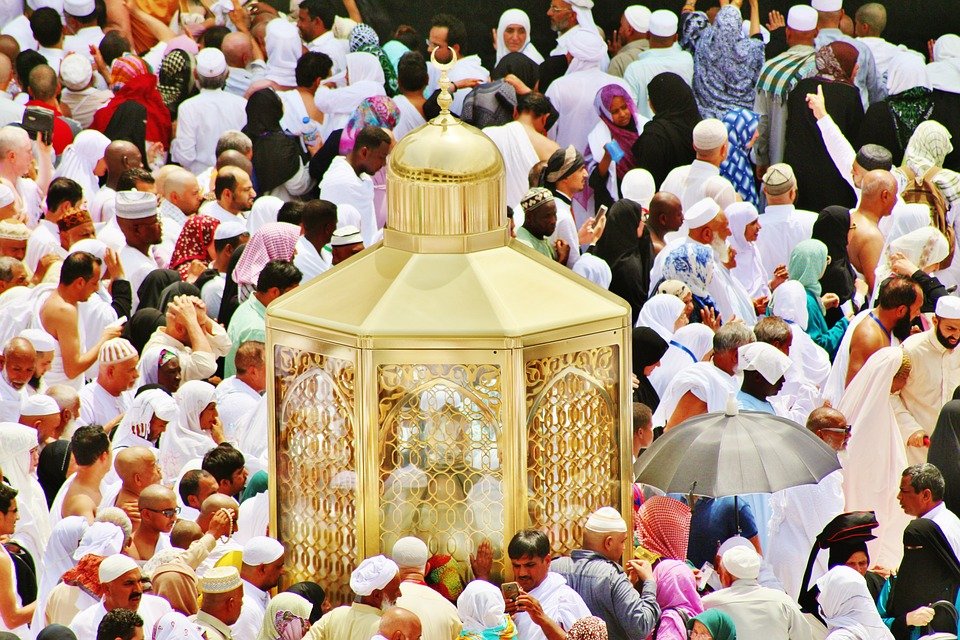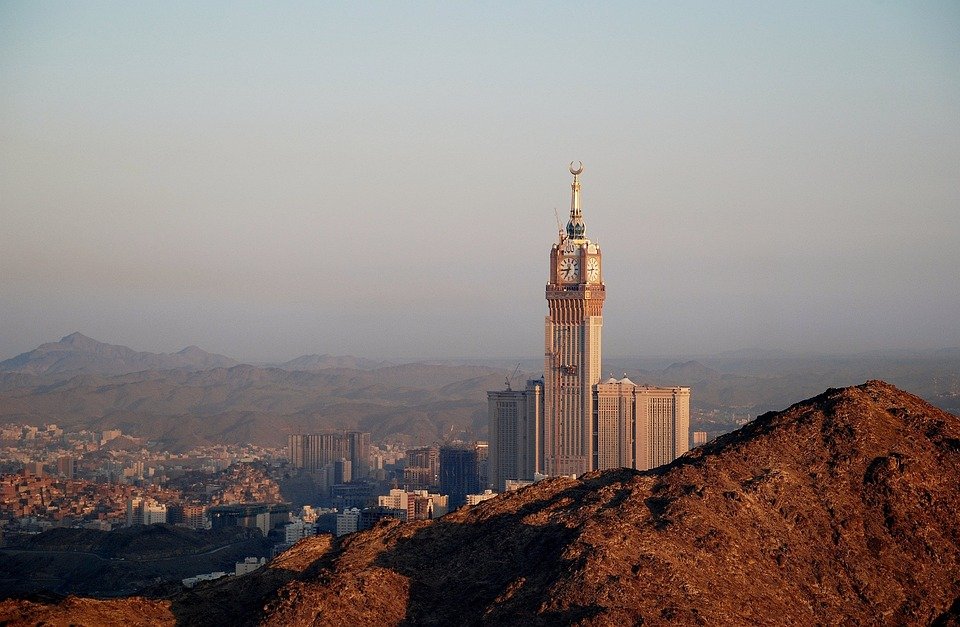You are here to read: What Different Steps in Hajj Mean: A Complete Guide – A Thoughtfully Written Guide Offering Spiritual Wisdom and Travel Advice for Every Pilgrim who is going on holy journey of Hajj or Umrah.
Understanding “What Different Steps in Hajj Mean” is essential for anyone preparing for this significant pilgrimage. Hajj represents a series of rituals that hold deep spiritual significance in Islam, and each step is steeped in history and meaning. In this article, you will find a clear and informative guide to the various stages of Hajj, including their significance and purpose. I promise that by the end, you will have a comprehensive understanding of what each aspect of this sacred pilgrimage represents, helping you to appreciate the rituals on a deeper level.
In my opinion, knowing what different steps in Hajj mean is crucial for every Muslim, as it transforms the experience from mere obligation to profound spiritual growth. Each ritual not only commemorates moments from Islamic history but also encourages believers to reflect on their faith and commitment. With our extensive expertise of 9 years in the field of Umrah and travel to Makkah and Madinah, I feel confident that we can guide you through “What Different Steps in Hajj Mean: A Complete Guide.” Our insights will help clarify the importance and significance of each step, allowing for a more enriching experience during this holy pilgrimage.
What Different Steps in Hajj Mean: A Complete Guide
Understanding Hajj and Its Importance
Hajj, one of the five pillars of Islam, holds immense significance for Muslims around the globe. Every year, millions embark on this spiritual expedition to the holy city of Makkah, seeking forgiveness, guidance, and a renewed sense of faith. It symbolizes obedience to Allah and encourages unity among Muslims, transcending geographical boundaries. Each participant feels a sense of belonging to a larger community, coming together to fulfill a sacred obligation.
The journey of Hajj takes place during specific days in the Islamic lunar month of Dhu al-Hijjah. It’s a time when Muslims reflect on their lives, repent for their past sins, and seek to strengthen their relationship with Allah. The rituals of Hajj are rich in meaning and history, designed to cultivate humility and devotion. I believe participating in this massive gathering can create a sense of peace and purpose that many find invaluable.
The Ihram: A Symbol of Purity
As pilgrims prepare for Hajj, they enter a sacred state known as Ihram. This phase involves wearing specific garments: two white, seamless cloth pieces for men and a simple dress for women. I feel that this simplicity serves as a reminder of equality, stripping away any markers of wealth or status. In this attire, pilgrims stand before Allah in humility, signaling their readiness to partake in the rituals.
While wearing Ihram, pilgrims abstain from certain actions, like cutting hair and using perfume. This self-discipline cultivates mindfulness, encouraging believers to focus solely on their spiritual journey. It’s a beautiful way of saying, “I’m here for Allah, and nothing else matters.” This initial step establishes a mindset centered around devotion and purity, setting the tone for the days ahead.
Tawaf: Circling the Kaaba
Once in Makkah, pilgrims perform Tawaf, which involves circling the Kaaba seven times in a counterclockwise direction. This elegant dance around the sacred structure represents the unity of believers in the worship of the One God. I find this ritual particularly profound, as it enacts our collective devotion and the shared experience of faith.
You're at the middle of this awesome post at AirlinkHajjandUmrah.com through: What Different Steps in Hajj Mean: A Complete Guide. Keep reading, it gets better!
Each circle holds unique significance. As you approach the Kaaba, you cannot help but feel the history and prayers that have filled this sacred space over centuries. Many pilgrims reflect on the importance of the Kaaba, which symbolizes the House of Allah. With every rotation, the heart swells with hope, prayers, and a sense of connection to those who came before.
Sa’i: The Journey Between Safa and Marwah
After completing Tawaf, pilgrims embark on Sa’i, a ritual where they walk seven times between the hills of Safa and Marwah. This action commemorates Hagar’s search for water for her son, Ishmael. This act embodies perseverance and reliance on Allah, reminding us that even in our struggles, we can seek help from the divine. I think experiencing Sa’i helps connect us with the profound stories of our forebears.
The hills themselves are reminiscent of the trials Hagar faced, and as pilgrims traverse back and forth, they embrace their own challenges. With each step, there’s a reminder that Allah provides support during trying times. Many find themselves lost in prayer, connecting deeply with their hopes and aspirations while continuing the ritual.
Standing at Arafat: The Climax of Hajj
One of the most crucial steps in Hajj takes place on the Day of Arafat, where millions gather at the plain of Arafat. Pilgrims spend the day in prayer and reflection, seeking forgiveness and making heartfelt pleas to Allah. This moment encapsulates the essence of Hajj, and for many, it is the highlight of their pilgrimage. I feel that standing together on this day, surrounded by thousands of fellow believers, reinforces the importance of humility and faith.
The emotional weight of the day is palpable. As the sun sets, pilgrims unite in prayer, hoping for mercy and guidance in their lives. I believe this powerful experience exemplifies the bonds of brotherhood and sisterhood that exist within the Muslim community. The spirit of Arafat is one of hope and renewal, making it a life-changing moment for countless participants.
The Importance of Mina and the Ritual of Stoning
Following Arafat, pilgrims proceed to Mina, where they spend the night in prayer. This quiet reflection allows them to prepare for the next rituals, culminating in the stoning of the devil at Jamaraat. Each act of throwing stones symbolizes rejecting temptation and evil. I think this is a beautiful way of illustrating our struggles against negativity in our lives.
The stoning ritual itself serves as a reminder that faith often requires active resistance against doubts and fears. As pilgrims throw the stones, they express a longing to overcome personal challenges and become stronger in their beliefs. Each stone thrown carries a significant meaning and ignites hope for a fresh start. It’s an empowering act, marking a pivotal moment in the spiritual journey of every participant.
Celebrating Eid al-Adha: A Time for Sacrifice and Reflection
Hajj concludes with Eid al-Adha, a celebration of sacrifice. Pilgrims perform the ritual sacrifice of an animal, commemorating Abraham’s willingness to sacrifice his son in obedience to Allah. This act of giving and sharing resonates deeply, reminding us of our responsibilities toward the less fortunate. I believe this selfless act fosters compassion and encourages us to reflect on the blessings we have in our lives.
Following the sacrifice, pilgrims distribute the meat to those in need, reinforcing the importance of community care and support. This tradition brings joy to many, as it embodies the spirit of sharing and gratitude. The festivities create an atmosphere of unity and love, allowing participants to celebrate their faith with family and friends. In the end, this culmination of rituals serves as a reminder that the essence of Hajj lies not only in the physical acts but also in the lessons of humility, sacrifice, and community.
That wraps up What Different Steps in Hajj Mean: A Complete Guide. Thanks for sticking with us till here! Share this: What Different Steps in Hajj Mean: A Complete Guide with your friends.
Check our homepage at Air Link Hajj & Umrah for more awesome updates.
Some interesting posts are: 1: Umrah Mubarak, 2: When is Umrah closed 2026?, 3: When does Umrah start after Hajj 2026?
Mushu, an experienced Saudi Arabia traveler and writer, shares insightful tips and spiritual reflections to enhance Hajj and Umrah journeys for fellow pilgrims. He has been to Makkah and Madina from 2016 to 2023 many times and his posts will reflect this.







